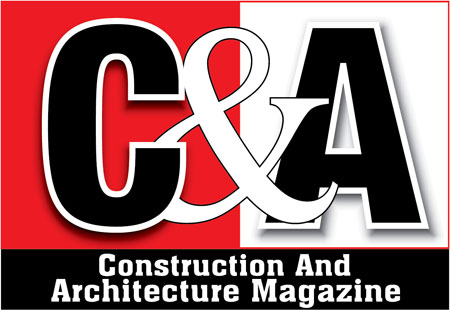Growing Demand For High-Speed, High-Capacity, Smart Elevators
Manish Mehan, CEO and MD of TKE (India)


What is the current scenario of the elevator and escalator market in India? How much growth do you expect in the times to come?
The Elevator and escalator market has been seeing steady growth Increased real estate activity along with rising disposable income, increased migration to urban areas, rise in aged population, and foreign direct investment inflow in construction comprise some of the key factors propelling the mobility solutions market in India. Particularly, we observed growing demand for high-speed, high-capacity, smart elevators that can carry many passengers at once, safely and comfortably, particularly in high-rise office buildings, commercial complexes, and other large-scale facilities. Looking forward, we see an emerging trend of data driven solutions with better user experience and less reliance on manpower.
Major innovations and advancements such as the launch of smart elevators, rope-less elevator operating inside the same shaft – our revolutionary MULTI, AI, and Internet of Things have changed the overall face of the elevator industry. It has made vertical transport easy and smart in the past few years. It is an exciting time for the elevator industry. As the technology evolves, the elevators, their maintenance, their upgradation will also evolve simultaneously. The future of elevator systems will head towards better energy-efficiency.
From the aesthetics of the commercial and home elevator cars to the durability and sustainability of the elevator systems, everything is evolving and getting better. Therefore, we can expect smart lifts and elevators to become even more popular in the future.
Furthermore, as urbanization continues to grow, the need for housing and commercial space will grow, which will increase the demand for vertical transportation. The elevator and escalators market in India is expected to post a year-over-year growth rate of 7.68% during 2020-2024.
Having said that, the Oxford Economics’ Global cities report estimates that India will have 17 out of 20 fastest-growing cities in the world between 2019 and 2035, and Indian cities are likely to contribute to 70% of India’s GDP by 2030.
How would you rate the impact of pandemic on the elevator and escalator market in India and post pandemic recovery?
India has been one of the most affected countries amid the COVID-19 pandemic. Disruption in the supply chain of raw materials and halted construction activities, caused by the COVID-19 pandemic, resulted in slower demand for elevators and escalators.
As the market slowly recovers from COVID-19, the elevator and escalators market size in India is expected to pick-up its pace and grow by USD 659.2 million during the period 2020-2024.
Meanwhile, the Real estate sector in India is expected to reach US$ 1 trillion by 2030 and by 2025, it is expected to contribute 13 per cent to the country’s GDP. Retail, hospitality and commercial real estate are also growing significantly, providing the much-needed infrastructure for India’s growing needs and a strong impetus to the Indian elevator and escalator industry.
Has there been any shift on the consumer patterns on the elevator’s markets?
The Covid-19 outbreak has had a severe impact on society and the economy, it has also changed how people travel, commute, and conduct business activities. Passengers have become more conscious about elevators hygiene and safety protocols, while businesses, property owners, and managers are looking into monitoring their mobility assets without the need of being on-site.
On this end, TK Elevator answers with innovative solutions such as our touchless elevator call system, and our MAX monitoring and preventive maintenance solutions.
Share with us your views on the upcoming trends and growth drivers of elevator and escalator market as well as your business?
Govt.’s ambitious plans such as housing for all, 100 smart cities project, upcoming metro rail and airport projects, rising urbanization and economic growth would remain the major driver for the growth of the industry.
We have also been successful in supporting REITs in India. REITs own a significant share of commercial properties across the globe, including commercial, industrial, retail and more. TK Elevator provides maintenance and modernization services to elevator and escalators of all makes across property portfolios of REITs, which translates to costs and administrative benefits for their investors.
Which segment has the largest share in the elevator and escalator market? What are the key markets?
Residential segment has been the largest contributor to the industry in India, having 75-80 percent of the elevator market share. Wherein, the affordable housing is expected to account for 85-90 percent of the total residential market. Mid-income housing market is expected to account for 7 percent of the total housing demand till 2028 which translates to 3-3.5 million houses.
The key markets for elevators and escalators can be termed as the affordable housing, smart cities, commercial realty and large infrastructure projects like metros and airports.
Having said that, the increase in commercial space such as office, retail, and hospitality and demand from new infrastructure development are some of the key factors propelling the escalator market in India.
India has also been witnessing a rapid increase in investments both by government and private entities on large-scale metro projects, especially in tier-1 and tier-2 cities, to provide an effective transport system to consumers. The consistent growth in the construction of new metro stations and airports has increased the demand for elevators and escalators.
Over time, new metro rail lines have been added in areas near Delhi. Similarly, other Indian cities, such as Bengaluru, Hyderabad, Chennai, Pune have started metro rail transportation and have planned to increase connectivity in the future. Similarly, in order to cater to the rising air traffic, the Government of India has envisaged increasing the number of operational airports to 190-200 by FY40 from current 103 airports.
Real estate investments in the vicinity of these metro rail stations and airports will also create demand for elevators and escalators, contributing to elevator and escalator market growth in India.
Which regions are proving to be having immense potential for your business?
In terms of regional share, the Western and Northern regions of the country are the largest revenue contributors for us. Increase in infrastructure investment coupled with rising demand for new commercial and residential complexes have been significantly driving the demand for elevators in these two regions.
Most elevators in India, about 60%, continue to be sold in the major Tier 1 cities. However, with strong growth in Tier 2 / 3 cities such as Vizag, Indore, Coimbatore, Bhubaneswar, Kochi, to name a few, this ratio will change. While Tier 1 cities will have more high-rise and high-speed elevators, Tier 2 / 3 cities are expected to have a higher growth rate in the number of elevators.

